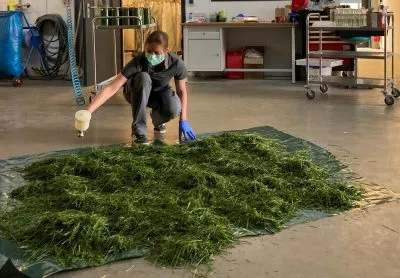Preparation is key
It’s been a long, hard season. (Aren’t they all?) Harvest is completed, the snow is about to fly, and the holidays await us. Ideally, our farmers will get some much-needed rest and relaxation over the next few weeks. But we all know that the work never ends. The best we farmers can do is be prepared for the next phase so that it goes as smoothly as possible.
That said, here’s a list of things to consider taking care of before the snow melts and we start the process all over again. By checking as many items as possible off your list over the winter, you’ll cut down on unforeseen issues before spring planting.
Corn Silage Completed
This goes without saying but it’s worth noting that while corn harvest is the exclamation point in a long year, it also signals the opening of off-season tasks. Even though your silage is piled perfectly and sealed up tight, there’s constant management to handle for both health and safety reasons. Make sure that pile stays sealed until feed-out. Ensure that you maintain proper face management to prevent reheating and accidents.
Fall crop planted
By now, your fall crop should already be in the ground. If not, consider a good cover crop or winter forage to both protect your soil until spring and bolster your feed inventory.
Manure management done
Manure is a cheap and effective way to offset the cost of commercial fertilizer, but it should be managed correctly. Manure management is complicated but can be encapsulated with a few basics:
- Make sure manure applicators are maintained and cleaned
- Test soil to ensure that you’re using the correct amount of manure
- For larger operations, grid sampling can suggest where to apply manure best and where you’ll need commercial fertilizer
- Lower-yield areas are likely the areas that could benefit most
By knowing and documenting this information, you’ll be better prepared to apply manure.
Farm equipment maintenance
Winterizing your equipment is vital for a smooth and productive spring. Clean, wash, fix, and check all your applicators, choppers, wagons, tractors and anything else you’ll rely on in 2025. Download software updates if needed. Make sure all safety features are in place and working. It’s easy to overlook small pieces of equipment, so be thorough!
Goals and budget set for 2025
This sounds obvious, but having clearly realized goals for the coming year will help you efficiently and intelligently:
- Order seed
- Order inoculants
- Know how much supplemental feed you’ll need
Your ultimate goals will also help you set your budget for the coming year and know where you have room to spend and where to conserve. Set your budget and don’t exceed it. It’s easy to say and hard to execute, but that’s what a budget it for!
Pile planning
It might be early, but if you have time, you can get ahead of the year by planning your pile now. Know where you’re going to put it, how big it’ll be, if you’ll need new equipment to execute the pile how you need to, etc. Getting this task out of the way means you’ll be more flexible in the months to come.
Are You Prepared for Next Year?
- A Post-Harvest Checklist
- Corn silage done
- Fall crop planted
- Manure management done
- Farm equipment maintenance
- Goals set for 2025
- 2025 silage budget prep
- Pile planning

Your BONSILAGE Silage Expert is always on hand with help and advice. Set up a chat with your Silage Expert here or visit BONSILAGEUSA.com for everything you need to know about silage.



